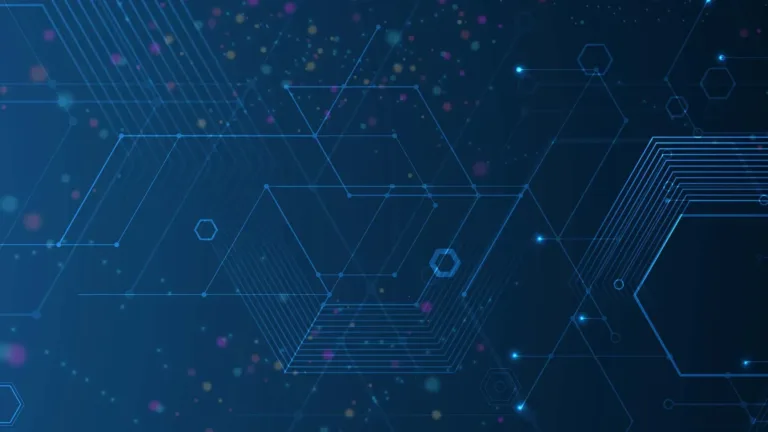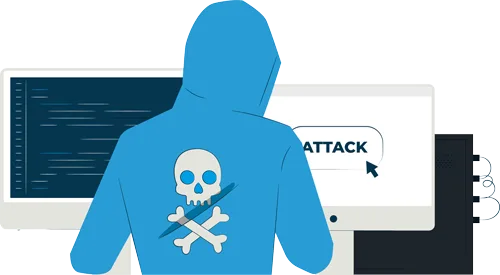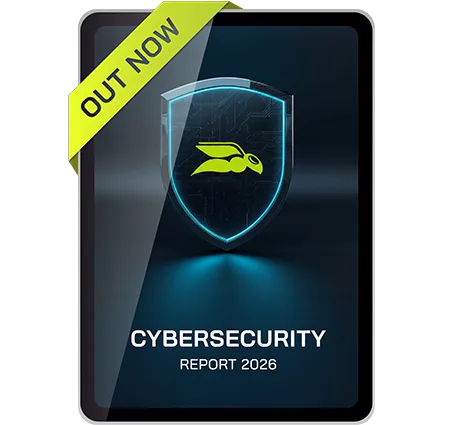

Statistics on Ransomware Attacks
Howdy partner and welcome to the wild world of ransomware, where your data is held hostage, and the ransom note is written in binary! Today we will dive into the ransomware statistics of these digital heists. Exploring the who, what, when, where, and why. So, strap in, grab your popcorn, and get ready for a ride through the dark alleys of the internet.
Ransomware Statistics & Facts
Ransomware attacks pose a significant threat globally, with increasing frequency and sophistication. These attacks cause billions of dollars in loss annually, with average ransom demand now reaching millions. In 2024, the average ransom demand rose to $2.73 million. Despite these statistics, 97% of impacted organizations managed to recover their data.
Critical infrastructure and enterprises in sectors like healthcare, finance, and government are prime targets. Double extortion tactics, where attackers first take a copy of the data, and then encrypt it and then threaten to release it, adding pressure on victims, making it more likely that they’ll pay.
The frequency of attacks has increased by 13% over the past five years, with average incident costs at $1.85 million in 2023 and an average downtime of 24 days post-attack. To date, the highest (known) recorded payout was $40 million by an insurance company in 2021.
Common attack methods include phishing, exploiting vulnerabilities, and leveraging software weaknesses. This highlights the need for robust cybersecurity and employee training. Practical advice on protection and mitigation strategies is crucial for strengthening organizational defenses, and to reduce these ransomware statistics.
Ransomware trends that will continue in The Years to Come
As we move towards the future, ransomware attacks are anticipated to evolve and become even more sophisticated. Cybercriminals are continuously adapting their tactics to exploit new vulnerabilities and maximize their impact.

Ransomware Impact Report 2025
Ransomware attacks are increasing for the first time in 3 years, reaffirming its status as one of the most persistent threats to businesses in 2025.
Find out how organizations are adapting, what emerging trends are, and where new risks lie.
This section dives into key ransomware trends that are anticipated to shape the cybersecurity landscape in the coming years, contributing to these ransomware statistics. Understanding these trends in the latest ransomware reports and articles is paramount for organizations to bolster their defenses and stay ahead of potential threats.
Ransomware-as-a-Service (RaaS)
RaaS remains a significant trend, making it easier for less technically skilled attackers to launch sophisticated ransomware attacks. This model allows cybercriminals to purchase ready-made ransomware kits on the dark web. This significantly lowers the barrier to entry and increases the chances of your organization becoming a target.
Manual Hacking Operations
Attackers are increasingly combining automated tools with manual hacking techniques. This hybrid approach allows them to conduct detailed reconnaissance on an organization to tailor their attacks to specific targets, maximizing the impact.
Data Exfiltration
Beyond encrypting data, ransomware groups are focusing on stealing sensitive information to use as leverage for extortion. This tactic increases the pressure on victims to pay the ransom, attackers know that the threat of data leaks can, in most cases, be more damaging than data encryption alone.
Supply Chain Attacks
Targeting third-party vendors and suppliers to gain access to larger organizations will continue to be a significant trend. These attacks exploit the interconnected nature of modern business support and operations, making them particularly effective.
Rapid Exploitation of New Vulnerabilities
Ransomware actors are becoming faster at weaponizing newly discovered vulnerabilities, often within 24 hours of their disclosure. This rapid exploitation makes it critical for organizations to patch vulnerabilities as quickly as possible. Vulnerability scanning tools and third-party patching solutions become your key line of defense.
AI-Powered Threats
The use of artificial intelligence to enhance the sophistication and effectiveness of ransomware attacks is on the rise. AI can help attackers automate tasks, evade detection, and optimize their strategies, making attacks more efficient and harder to defend against. With AI attacking also comes AI defense, solutions such as Microsoft Copilot for Security are helping SOC teams transform their capabilities.
Targeting Account Recovery Methods
Attackers are increasingly focusing on compromising account recovery processes (the steps a user goes through to gain access after they’ve forgotten their password / lost their MFA device or smartphone) to gain access to systems and data. This method can bypass traditional security measures and provide attackers with a backdoor into the network.
Mobile Ransomware
With the growing reliance on mobile devices, ransomware targeting smartphones and tablets is expected to increase. This trend highlights the need for robust mobile security measures and the use of Mobile Application Management (MAM) or onboarding of corporate devices into enterprise endpoint management.
These trends emphasize the evolving nature of ransomware threats and the importance of adaptive cybersecurity strategies to protect against them.
Recent ransomware attacks
In recent years, ransomware attack statistics have surged, targeting various sectors and causing significant disruptions. Below are some of the most notable ransomware incidents, illustrating the evolving tactics of cybercriminals and the profound impact these attacks have on organizations and individuals alike.
Sensata Technologies Heist
An industrial tech manufacturer called Sensata Technologies, experienced a ransomware attack which disrupted their systems and operations, including shipping, receiving, and production. Interim measures were put in place, but the timeline for full restoration was uncertain.
Preliminary investigations suggest files were stolen, but it is yet to be seen what data these documents contain and if they will be used for leverage against the company. Despite the attack, Sensata does not expect a significant financial impact for the current quarter.
Sensata is known for producing sensors and electrical protection components for various markets, including automotive, industrial, and aerospace.
Change Healthcare Attack
A UnitedHealth-owned prescription processor, Change Healthcare, was hit by a ransomware attack that caused massive disruption in the U.S. healthcare system. The attack prevented many pharmacies and hospitals from processing claims and receiving payments for weeks. UnitedHealth paid a $22 million ransom to a Russian-speaking cybercrime group responsible for the attack, but the overall impact to the economy was measured in billions of dollars.
Ascension Health System Attack
The Ascension health system experienced a ransomware attack that forced it to divert emergency care from some of its hospitals. This attack significantly impacted patient care and hospital operations, highlighting the vulnerability of healthcare systems to ransomware threats.
CDK Global Attack
CDK Global fell victim to a crippling ransomware attack. The attack disrupted thousands of car dealerships that rely on CDK’s platform, causing significant operational challenges. The disruptions continued for nearly two weeks, and CDK Global was reportedly planning to pay the attackers’ ransom demands
Snowflake Customers Attack
Several customers of Snowflake, a cloud-based data warehousing company, were targeted in a ransomware attack. The attackers focused on data theft and extortion, leveraging the sensitive information stored in Snowflake’s systems to pressure victims into paying ransoms.
RansomHub Group’s Rise
This ransomware group quickly established itself as a prominent extortion group by making 181 posts to its leak site between February and June 2024. The group has been involved in numerous high-profile attacks, contributing to the increasing number of ransomware incidents reported last year.
Transform Your Cyber Defense Strategy Today
Don’t leave your organization vulnerable to sophisticated cyber threats. With Hornetsecurity’s Advanced Threat Protection, you can safeguard your emails and data against the latest ransomware and phishing attacks. Reach out now to learn how to enhance your security measures and ensure peace of mind for your organization.

Conclusion
Well partner, I hope you hung onto your reins during that wild ride because we have got to that point in the article where we need to hit home the takeaway message. The rise in ransomware statistics highlights the urgent need for strong cybersecurity.
As threats become more advanced, organizations must remain proactive in their defense strategies. Keeping up with trends and learning from recent incidents can help businesses prepare for potential attacks. Adopting advanced technologies and solutions that leverage interoperability will drastically assist with detection and prevention.
Promoting cybersecurity awareness within your organization is key to reducing risks and maintaining a resilient defense.
FAQ
This is a difficult challenge as groups are routinely impacted / taken down by law enforcement action.
1. LockBit has been a major player over the last few years, but are now no longer a major threat. Other top ransomware groups making significant impacts are RansomHub, and PLAY.
2. RansomHub, a newer group, has quickly risen to prominence with numerous high-profile attacks and a significant presence on leak sites.
3. PLAY ransomware is also notable for its aggressive tactics and frequent attacks, contributing to the growing ransomware threat landscape. These groups continue to evolve their methods, making them formidable adversaries in the cybersecurity realm.
Yes, ransomware is widely considered one of the biggest cybersecurity threats today. It has the potential to significantly disrupt societies and economies due to its ability to strike quickly and cause extensive damage. The National Cyber Security Centre (NCSC) has identified ransomware as the most significant global cyber threat, noting its rapid evolution and the increasing sophistication of attacks
In 2024, approximately 97% of organizations that experienced data encryption due to ransomware were able to recover their data. This high recovery rate highlights the effectiveness of current data recovery strategies and the importance of having robust backup and recovery plans in place.


